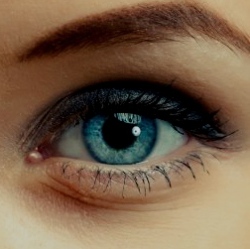
In a paper in the journal Cell, researchers report that they have cracked the code for facial identity in the primate brain. “We’ve discovered that this code is extremely simple,” says senior author Doris Tsao, a professor of biology and biological engineering at the California Institute of Technology and senior author.
“We can now reconstruct a face that a monkey is seeing by monitoring the electrical activity of only 205 neurons in the monkey’s brain. One can imagine applications in forensics where one could reconstruct the face of a criminal by analyzing a witness’s brain activity.”
The researchers previously identified the six “face patches” — general areas of the primate and human brain that are responsible for identifying faces — all located in the inferior temporal (IT) cortex. They also found that these areas are packed with specific nerve cells that fire action potentials much more strongly when seeing faces than when seeing other objects. They called these neurons “face cells.”
Previously, some experts in the field believed that each face cell (a.k.a. “grandmother cell“) in the brain represents a specific face, but this presented a paradox, says Tsao, who is also a Howard Hughes Medical Institute investigator. “You could potentially recognize 6 billion people, but you don’t have 6 billion face cells in the IT cortex. There had to be some other solution.”
Instead, they found that rather than representing a specific identity, each face cell represents a specific axis within a multidimensional space, which they call the “face space.” These axes can combine in different ways to create every possible face. In other words, there is no “Jennifer Aniston” neuron.
The clinching piece of evidence: the researchers could create a large set of faces that looked extremely different, but which all caused the cell to fire in exactly the same way. “This was completely shocking to us — we had always thought face cells were more complex. But it turns out each face cell is just measuring distance along a single axis of face space, and is blind to other features,” Tsao says.
“The way the brain processes this kind of information doesn’t have to be a black box,” Chang explains. “Although there are many steps of computations between the image we see and the responses of face cells, the code of these face cells turned out to be quite simple once we found the proper axes. This work suggests that other objects could be encoded with similarly simple coordinate systems.”
The research also has artificial intelligence applications. “This could inspire new machine learning algorithms for recognizing faces,” Tsao adds. “In addition, our approach could be used to figure out how units in deep networks encode other things, such as objects and sentences.”
